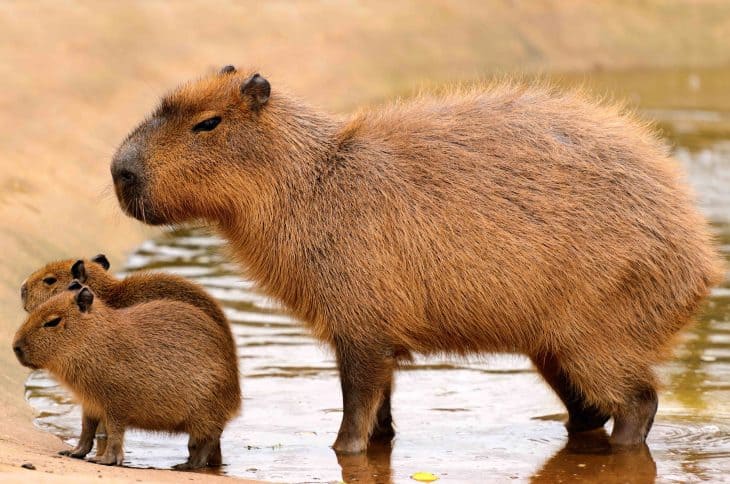
You won’t find any animal as calm and cool as the capybara. They’re so calm, that you can just walk into a group of capybaras without them panicking as other animals would. They’d look at you, sniff, and maybe nuzzle at you, but then they’d just go back to their own business. Learn more about these wonderful animals with these 40 capybara facts.
- Capybaras go around in groups of usually 10 to 20 animals.
- Some groups can number as many as 100 capybaras, though.
- Capybaras typically grow up to 134 cm long.
- They typically weigh on average around 56 kg.
- Capybaras don’t usually grow any heavier than 66 kg.
- Capybaras today live all over South America.
- Chile, however, remains the only South American country with no capybaras living in it.
- The Andes Mountains prevent capybaras from migrating into Chile.
- Capybaras once lived in Florida during the Pleistocene Epoch.
- They also once lived on the island of Grenada in the Caribbean Sea.
- Escaped capybaras have formed a wild breeding population on the island of Trinidad in the Caribbean Sea.
- Other escaped animals have been reintroduced to Florida, but scientists remain unsure if they have a viable population there.
- Escaped capybaras have also established a presence in California.
- Capybaras can live up to 10 years in captivity.
- In the wild, though, their natural predators reduce a capybara’s average lifespan to only around four years.
- Capybaras count guinea pigs and rock cavies as their closest relatives.
- Other relatives of theirs include the agouti, the chinchilla, and the coypu.
- Whether or not it’s legal to own capybaras as pets varies from state to state in the USA.
- Uruguay’s 2-peso coin features an image of a capybara.
- The capybara has the distinction of the largest rodent in the world.
Was this page helpful?
Our commitment to delivering trustworthy and engaging content is at the heart of what we do. Each fact on our site is contributed by real users like you, bringing a wealth of diverse insights and information. To ensure the highest standards of accuracy and reliability, our dedicated editors meticulously review each submission. This process guarantees that the facts we share are not only fascinating but also credible. Trust in our commitment to quality and authenticity as you explore and learn with us.
